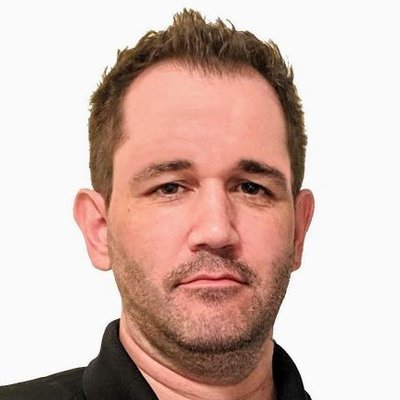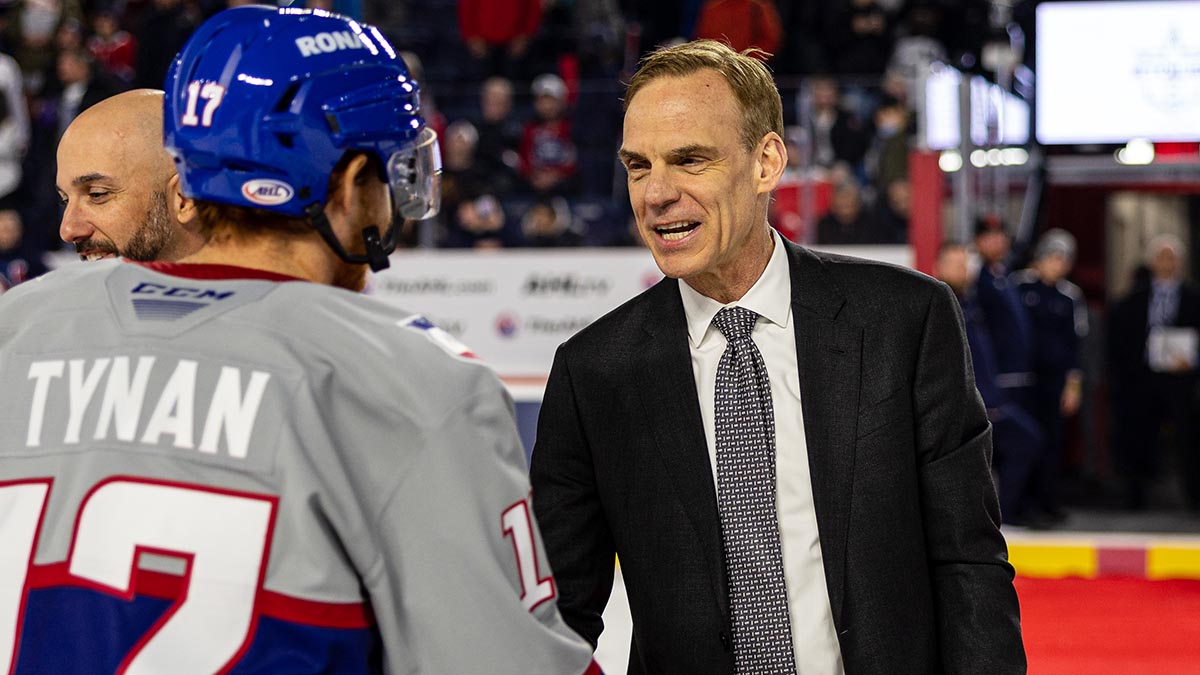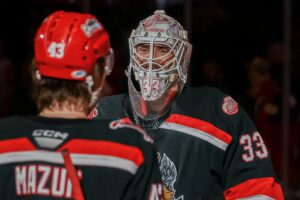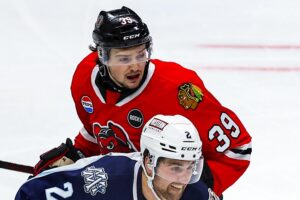📝 by Patrick Williams
After nearly three years of turbulence created by the COVID-19 pandemic, growth is now on the horizon for AHL President and CEO Scott Howson.
Since the league’s shutdown in March 2020, much of the past 36 months has been about assessing, responding to, and then rebuilding for the league and its teams. But now Howson can begin to shape long-term plans for the AHL, the National Hockey League’s top developer of talent.
Howson had a chance to outline his vision in his first All-Star address earlier this month in Laval, and he sounded “growth” as the operative word for a league that is now at a record 32 clubs.
“This season we are trending extremely well,” Howson said. “You can look at any metric. It’s going to be a record revenue year for the American Hockey League. If you look at average ticket revenue per game, average ticket revenue per team, corporate revenue… we’re hitting it out of the park.”
Howson already has accomplished one key initiative with the league schedule. Teams now play a unified 72-game schedule in the regular season. And in 2022, the AHL expanded its Calder Cup Playoff field to 23 teams, a move that has allowed more than 500 players in the league to gain postseason experience — a key goal for NHL clubs.
“The message we got from a lot of our NHL partners was they wanted their prospects playing in more meaningful games at the end of the year, and we really accomplished that,” said Howson, who spent 26 seasons in management with both the Columbus Blue Jackets and Edmonton Oilers.
Here is a look at several other topics that Howson addressed in Laval:
BROADCASTING
TSN, RDS and the NHL Network all televised both nights of the All-Star Classic events in Laval. That type of platform across both Canada and the United States “can be a really positive exposure for our brand,” Howson said. The AHL All-Star Classic was also streamed via AHLTV, and Howson sees streaming as an increasingly important vehicle for the league.
“We are completely focused on streaming right now,” Howson stated. “I don’t see a national traditional broadcast deal for the American Hockey League. It’s not something we’re pursuing. What there is an appetite for is streaming, and everybody wants content.”
“We are looking to see where our next opportunity is going to be. We’re very happy with AHLTV… It’s really one of the success stories in terms of viewership, in terms of subscriptions, in terms of revenue. We’re delighted by that product, but we want to see what else is out there.”
DIVERSITY INITIATIVES
Earlier this month the league launched an initiative that will “provide young professionals from diverse backgrounds with an opportunity to work with, and be mentored by, the training staffs” at the AHL All-Star Classic. Athletic trainers Sydney Kinder and Noémie Chartier-Lefrançois worked in the locker rooms and on the benches throughout the event in Laval.
“We want to expand this program,” Howson said. “It’s a great experience for them. They get to come in, they get to learn, they meet people, they network in the business, and we just want to keep expanding the opportunities.”
He also foresees coaches, officials, and equipment managers as potential areas for the program.
STATISTICS
“I’m a big time-on-ice guy,” said Howson, whose management background also featured six seasons as general manager in Columbus.
AHL teams previously tracked time-on-ice internally but found the statistics to be “really unreliable,” Howson explained.
“I would love to do it. We don’t have the technology or the capability right now. We’re a ways away, because we haven’t found the magic elixir yet.”
THE LEAGUE MAP
Coachella Valley and Calgary are new markets this season, but Howson does not expect any team movement ahead. The Firebirds came in as the league’s 32nd franchise, while the Flames relocated their AHL club from Stockton to play out of the Scotiabank Saddledome.
“I think we’re so early in the process,” Howson said of the Calgary market, “but the feedback I’m getting — whether it’s the hockey people or the business people — they’re very happy to have the team in Calgary.”
He also does not foresee divisional realignment any time soon. The Pacific Division has 10 teams; seven teams play out of both the North and Central Divisions while the Atlantic Division is an eight-team arrangement. Realignment would break up the Pacific cohort and likely force teams into the Central, and Howson does not see that as likely, given the additional travel burden that it could put on the division’s members.
“There’s no easy solution,” Howson explained. “I’m not saying it’ll never happen, but it’s not in the cards right now.”
HOWSON’S FIVE-YEAR OUTLOOK
While he does not expect franchise movement — “Our teams are solid and really stable in their markets,” he said — Howson has high hopes for the continued growth of the league.
“The league has come back so strong from the last two years, and we just want to keep growing it, and make it the best we can.”
TheAHL.com features writer Patrick Williams has been on the American Hockey League beat for nearly two decades for outlets including NHL.com, Sportsnet, TSN, The Hockey News, SiriusXM NHL Network Radio and SLAM! Sports, and was most recently the co-host of The Hockey News On The ‘A’ podcast. He was the recipient of the AHL’s James H. Ellery Memorial Award for his outstanding coverage of the league in 2016.






































